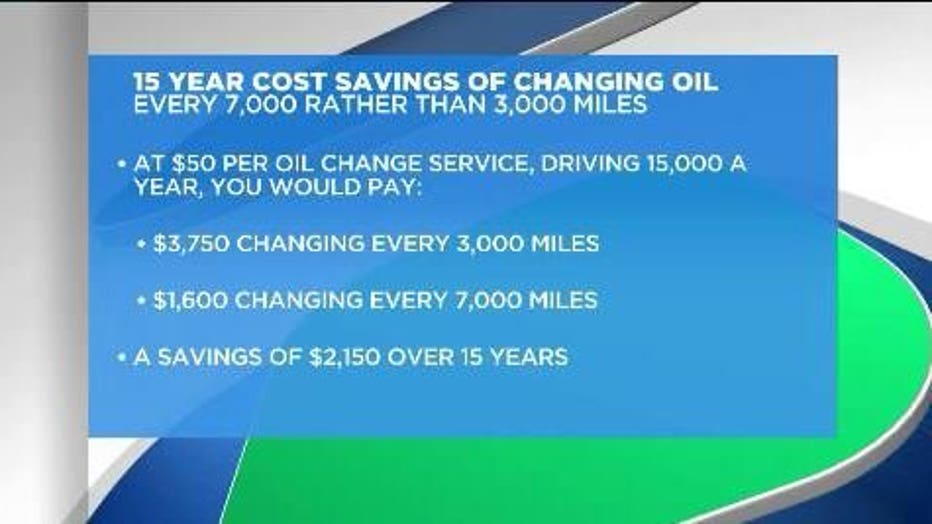Is it worth it? The 3,000 mile oil-change rule
For most vehicles on the road, the rule is pretty much dead or should be.
Today, 5,000 miles is the average for an oil change and for some new cars, it's now 10,000 or even more.
Experts with PEMCO Insurance say the best rule of thumb is to check the owner's manual in your car or look it up online.
Many modern engines are equipped with oil life monitoring systems.
"They'll measure things like speed, engine temperature, climate conditions and cold starts," said Community Relations Manager with PEMCO, Michelle Sievers. "They'll alert you when it's time to be serviced based on how the car is used versus a number on the odometer or a date on a calendar. "
Shops still like to use those window stickers to remind you about an oil change every 3,000 miles to be on the safe side.
"Shop tend to err on the conservative side," said Sievers. "Even with older vehicles that require 3,000 miles, you don't want to be that shop guy that is recommending 5,000 or 10,000 miles and have that customer come back with a burnt out engine."
A big mistake people make is not checking oil levels in their cars often enough.
Older vehicles, even with efficient oils, tend to burn or even leak a little oil and that can make the oil run low before it's time for a change. That's why PEMCO recommends checking the dip stick once a month.
You should also check your oil levels often if you live in an area with extreme weather conditions.
If you drive very few miles, you'll want to change your oil at least once a year.
Fewer oil changes could save you money in the long-run and also save the environment because not all oil gets recycled.


